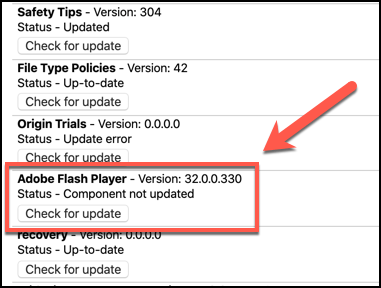

- How to install adobe flash in firefox update#
- How to install adobe flash in firefox software#
- How to install adobe flash in firefox download#
Now, in the case that you cannot use Adobe Flash in Chrome, what you have to do is uninstall it and reinstall it. Restart the browser and you will have the plugin updated.
How to install adobe flash in firefox update#
Writes " sudo update-pepperflashplugin-nonfree-instal l»(Without the quotes) and press“ Enter ”to start the update installation.If the update that appears has a higher number than the version you already have, then it is time to update. Write sudo update-pepperflashplugin-nonfree-status.Later you should look for updates, since when you install the plugin in this way, it will not update automatically.Restart the browser and you will see that you already have installed Flash Player for Ubuntu on Chromium.Type: exit and press "Enter" to close the terminal. Once the plugin is installed, it will appear again on behalf of your computer.Type in the terminal: « sudo update-pepperflashplugin-nonfree»(Without the quotes).You can do it from the task bar or by using the following key combination: Ctrl + Alt + T. The package name is "pepperflahsplugin-nonfree".
How to install adobe flash in firefox download#
How to install adobe flash in firefox software#
Wait for the software center to update the fonts.While there, select the box that says "Software restricted by copyright or legal issues (multiverse)" (software restricted by copyright or legal issues).You must click on the "Edit" menu and select the option "Software Resources" (software sources).This action can be done from the taskbar in Ubuntu. The first thing you should do is open the Ubuntu software center.You should see the Flash section right near the top. If you want to make sure the plugin is installed properly (without viewing a Flash clip, which is obviously the best way to get this info), just enter about:plugins in the Firefox address bar and hit Enter. That way if the update fails, you can run it again and then run the last command when ready.Īfter that, you should have Flash support in Firefox and other web browsers, and you shouldn’t even need to reboot (though if you didn’t already exit Firefox before installing Flash, restart the program now, and you should be able to watch Flash vids). Sudo apt-get install flashplugin64-installer Sudo add-apt-repository ppa:sevenmachines/flash If you prefer, you can run each of the three commands separately: However, if you open Synaptic and search for “ flash“, you will see there is now flashplugin64-installer included in the list of found packages, and is then easily installed (though you could always just run sudo apt-get install flashplugin64-installer in a terminal). Note that if you get an error, most likely because during the sources update it failed to fetch some info, this install will fail (since it won’t actually get to the last command and download and install anything). Sudo add-apt-repository ppa:sevenmachines/flash & sudo apt-get update & sudo apt-get install flashplugin64-installer This is easily done by pasting the following into a terminal:

Next, we need to add the Adobe Flash repository to the APT sources, update the sources list, then download and install the 64-bit plugin. You can always try just skipping all that and seeing if the 32- and 64-bit versions happily co-exist, but since the 32-bit one is failing you anyway, you may as well uninstall it and save any potential headaches. swf files in Nautilus, etc, and doesn’t appear to cause any conflicts. You can leave swfdec-gnome if that is installed, as that handles things like giving thumbnail previews for. I personally removed the popular gnash just to be safe (since it and the Adobe one always fought for supremacy, though that was never the problem, considering I installed Gnash after the Adobe product failed me). If you suspect you may have installed some open source Flash plugins, open Synaptic and enter “ flash” in the Quick search bar. What you first need to do is go into Synaptic and completely remove the package flashplugin-installer, or do so with the following command in a terminal (if you never installed it, obviously you can skip this step): While this might not be the solution to help everyone, hopefully it is the answer to your Flash woes. While you could be forgiven for not trusting a product that isn’t even at its first beta level yet, from what I have seen it is stable, and should be the answer you are looking for. But 64-bit users often find it is one big mess, and this has nothing to do with Ubuntu, as Adobe has only ever released a 32-bit version, as incredible as that may seem.Īt the time of writing, there is the first alpha 64-bit version available, so things are looking up. In fact, installing Flash support on 32-bit i386 systems it can be even easier than doing the same in Windows. While Flash support on Linux distros used to be a nightmare, most people these days rarely need to bother fiddling with it. 32-bit Ubuntu users: You can read this for some general info, but for installation of Flash use this guide instead.


 0 kommentar(er)
0 kommentar(er)
